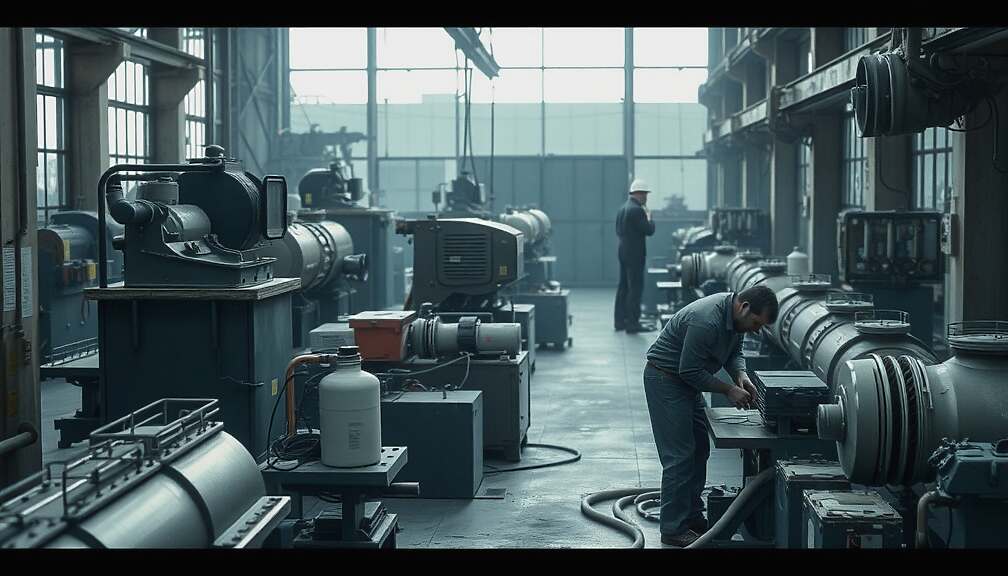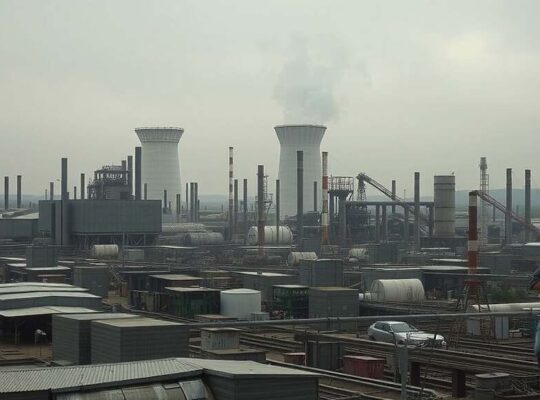Preliminary data released by Destatis, the Federal Statistical Office, reveal a concerning contraction in German industrial production for August 2025, raising fresh questions about the robustness of Europe’s largest economy amidst ongoing geopolitical instability and shifting global trade dynamics. The seasonally and calendar-adjusted output in the manufacturing sector plummeted by 4.3% compared to July 2025, marking a significant setback after a brief rebound the previous month.
The downward trend is further emphasized by a 1.3% decrease in production over the less volatile three-month period from June to August 2025, contrasting sharply with the initially reported 1.3% gain observed in July 2025. Year-on-year, industrial output registered a 3.9% decline, demonstrating a persistent vulnerability compared to August 2024.
The sharpest decline is directly attributable to the automotive industry, a cornerstone of the German economy. Production within this sector experienced a staggering 18.5% decrease, driven by a combination of factory shutdowns for scheduled holidays and ongoing production restructuring efforts. This dramatic collapse has amplified concerns about the sector’s capacity to adapt to the accelerating shift toward electric vehicle manufacturing and the associated supply chain challenges.
Beyond the automotive sector, weakness was also evident in critical industrial segments. The machinery sector, vital for both domestic investment and export markets, registered a 6.2% decline, reversing the 9.2% increase seen in July. Pharmaceutical production and the manufacture of data processing equipment and optical products also contributed negatively, with drops of 10.3% and 6.1% respectively. These figures suggest that broader economic headwinds, potentially related to rising interest rates and weakening demand from key trading partners, are impacting multiple facets of German industry.
A more granular analysis, focusing on the industrial production excluding energy and construction, paints an even more dire picture – a 5.6% decrease compared to July 2025. This contraction was felt across all three main categories of goods: investment goods, consumer goods and intermediate goods, signaling a pervasive slowdown rather than a sector-specific issue.
While energy-intensive industries managed a marginal 0.2% increase in August compared to July, a 2.7% drop over the three-month period to August reveals a longer-term vulnerability to volatile energy prices and a potential drag on overall industrial performance. Similarly, when compared to August 2024, these sectors demonstrated a 4.0% calendar-adjusted decline.
The data are likely to intensify the debate surrounding government policy and the efficacy of existing industrial support measures. Critics argue that the reliance on traditional manufacturing sectors, particularly those heavily reliant on global supply chains, has left the German economy increasingly exposed to external shocks. The current situation may necessitate a more aggressive approach to fostering innovation, promoting diversification and attracting foreign direct investment to counteract the deepening industrial contraction. The future viability of Germany’s economic powerhouse hangs increasingly in the balance.












